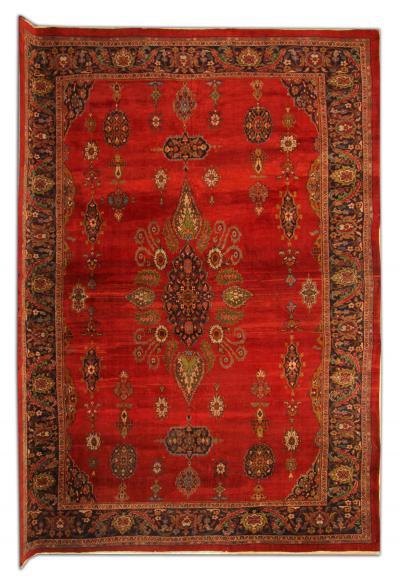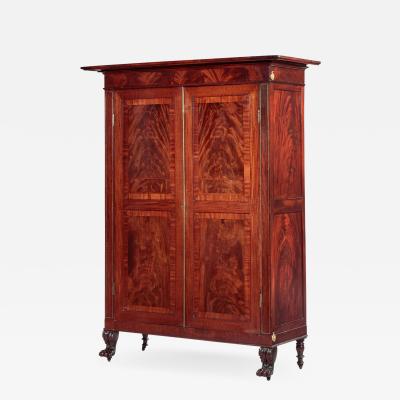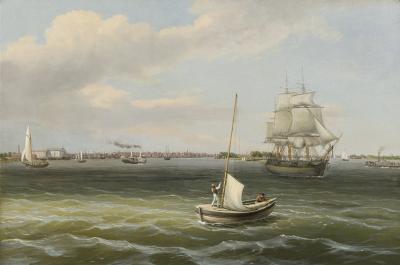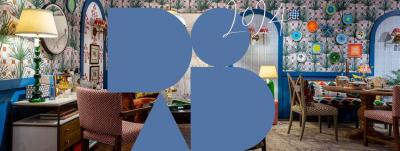Ziegler and Their Carpets
Zieglers are among the most sought-after antique carpets in today’s market. Their gracious size, subtle color combinations, and uncluttered patterns make them appealingly adaptable to room settings of varied décor. These fashionable carpets were produced in Persia by the Manchester, England–based Anglo-Swiss firm of Ziegler & Company from the late nineteenth to the early twentieth centuries.
Persia (now Iran) has a history of being one of the most renowned producers of Oriental carpets, long recognized for their splendor and elegance. Traditional Persian carpets, as we know them today, have been produced since at least the fifteenth century. While there is documentation that Europeans were importing Persian carpets by the sixteenth century, the trade connection was likely established at an earlier date.
With the invasion of the Afghans and the subsequent overthrow of the Safavid dynasty (1502–1722) of Persia, the country was in a state of political confusion. The court patronage, which stimulated the art of carpet making, ceased, and the great urban workshops that supplied the aristocracy of Persia and Europe were forced to close down. In the eighteenth and early nineteenth centuries, the European market for Oriental carpets began to diminish as the demand for domestic weavings increased. Rather than the Eastern or Islamic taste of the Persian carpets, the English workshop of Axminster (and later Wilton and a Brussels carpeting), for example, followed the prevailing Western fashions of the time, which featured large floral and architecturally inspired motifs and designs. With the diminished market and political flux, the skilled Persian weavers were scattered, and in many ways the art was lost. Indeed, Sir John Malcolm, when writing on his travels in Persia in 1815, devoted an entire chapter of his book, The History of Persia, to its art and crafts, but made no reference to the existence of carpet making. It was not until the establishment of the Qajar dynasty (1794– 1925) that internal stability was reinstated in Persia. This, in conjunction with a renewed Western interest in Eastern carpets, brought opportunities for the revival of the Persian carpet weaving industry, which took several decades to reestablish a foothold.
With renewed interest in the exoticism of the Middle and Far East, a partial result of the Great Exhibition in London of 1862, Orientalism was introduced to a vast number of consumers. Travel literature also fueled the imaginations of people hungry to learn all they could about the mystical, far-off lands. Orientalism was back in fashion, and consumers once again sought Persian carpets.
The growing middle and upper classes in England, spawned by the riches and abundance of goods resulting from the Industrial Revolution, built grand houses to accommodate their wealthy lifestyles. When decorating these spacious homes, Victorian couples traveled to the London showrooms and bazaars. By the 1860s, department stores such as Liberty & Company offered shoppers all manner of paraphernalia, including carpets. Unfortunately, the carpets were generally either too long or too narrow for the rooms of the new English homes, because the imported carpets were designed in a traditional format to fit urban, Persian rooms. The rugs usually consisted of four pieces that included a central panel flanked by matching runners, which formed a square, and a fourth carpet laid horizontally across the top, which when placed together made a set. Exported to and sold in England, they were marketed as individual carpets, and the separate pieces were incompatible with the expansive Victorian homes. Other available carpets included tribal and village rugs. Small in size and made for humble dwellings, they were often viewed by their Western purchasers as simple floor coverings with minimal value.
Adapting to consumer demands, Persian carpet manufacturers acknowledged the changing market. Their output shifted to incorporate Western tastes, and a large percentage of the carpet production was geared to this expanding sector. Ziegler & Company also recognized the opportunity to take part in this market. Having already established business connections in Turkey and Persia through the export of printed cottons from their English-based firm, by the latter part of the nineteenth century they had established their own looms in Persia for the production of carpets, becoming the first successful European manufacturer to do so. Although other companies followed suit, Ziegler remained one of the largest non-Persian-owned producers and exporters of Oriental carpets during this time period.
Ziegler established their offices and workshops in the town of Sultanabad; their economic presence became so great that the town was known as “Fort Ziegler.” The company used ready-dyed wools, large looms to achieve the required sizes for Western homes, and perhaps most importantly, offered a regular wage to locals, thereby attracting thousands of weavers to man their looms.
Influenced by the principles of Western architectural proportion and room settings, Ziegler carpets were made to achieve a balance and symmetry in keeping with the scale of a room and its furnishings. Carpets woven in the Ziegler workshops featured central medallions or all-over pattern repeats. The latter designs integrated the classic “Shah Abbas” and “Vase” decoration of larger-than-life stylized blossoms and palmettes, suggesting a fantastic garden. Never overcrowded, these patterns give a sense of open space and elegance. This design scheme varied from the traditional Persian court carpets, which incorporated a profusion of intricate and elaborate floral patterns. The airy visual effect of Ziegler carpets resulted from the design as well as from a weave that was much coarser than that of traditional carpets. The pile was also left higher so it would be soft to the touch, creating a feeling of both visual and physical warmth. Also, fewer color combinations were used, resulting in a simpler balance and harmony; the color green was liberally incorporated, perhaps to echo the English fondness for the countryside.
Perhaps the finest single collection of Ziegler carpets to come on the market was that formed by Sir Edward Cecil Guinness, Baron Iveagh, for Elveden Hall, which he purchased in 1894. In preparation for a royal visit from the Prince of Wales, Guinness furnished the house with the latest in fashionable décor. When the contents of Elveden were offered for sale in 1984, included among the carpets were twenty-three Ziegler Sultanabads, which were mainly purchased from Liberty & Company and Harvey Nichols. All were superb examples in original condition, with the added attraction of having soft, pale colors, a desirable criterion for interior decorators. Though miscatalogued as Turkish Oushak carpets and moderately estimated between £400 and £2,000, on the day of the sale they repeatedly fetched over £35,000. All the major examples sold to the trade. Since this sale, there has been no single collection that compares in the combination of quality and quantity.
The Elveden sale offered insight into fashionable decorating schemes of the time, which included Ziegler carpets. The sale finally ended the myth that knot count should be the criterion for what makes a “fine” carpet. With newfound awareness of these carpets and the worldwide popularity of the English country house look, a greater demand has necessitated modern reproductions. All carpets from Sultanabad and its surrounding area are now indiscriminately labeled as “Ziegler.” Strangely, they have reached the exalted position of status symbols. “I want a Ziegler” is a common request, or command!















.jpg)
.jpg)
.jpg)
















